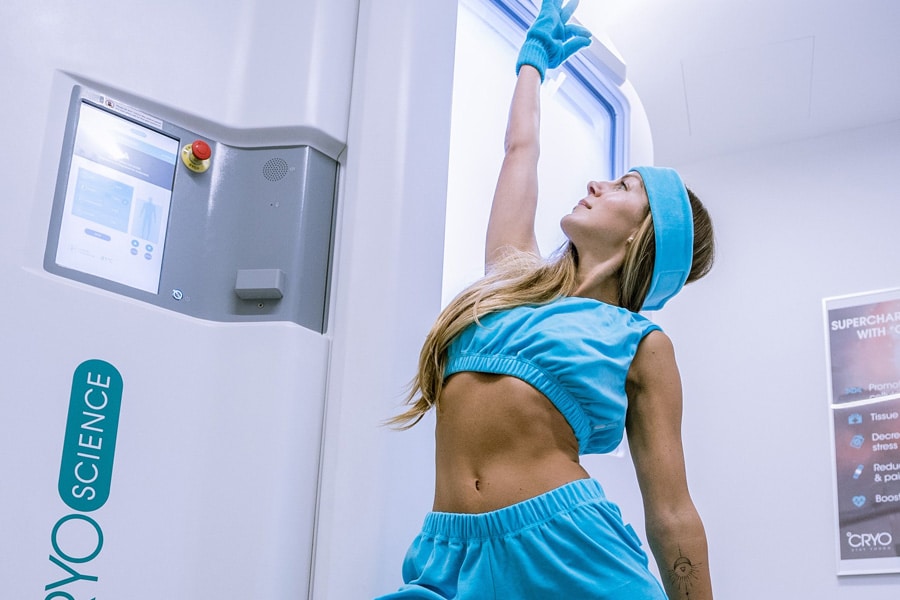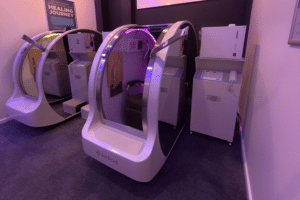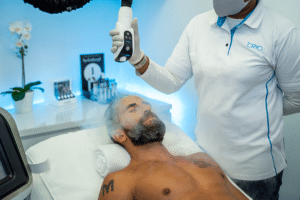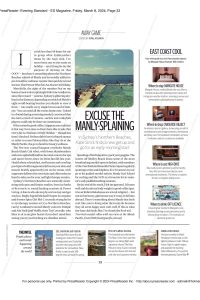The use of cryotherapy, from localised cold therapy to the use of advanced equipment such as cryochamber and cryosauna, is gaining traction in the field of science and technology for its therapeutic benefits for both healthy individuals and those suffering from different medical conditions. In a bid to provide the most effective solution, °CRYO Science, a leading cryogenic equipment innovator, has developed the °CRYO Arctic Chamber – a breakthrough in cryotherapy.
The °CRYO Arctic Chamber utilises breathable air technology for cooling, instead of liquid nitrogen, eliminating the risks of asphyxiation associated with nitrogen inhalation. Although nitrogen is generally considered non-hazardous because it is found in the atmosphere, it can be dangerous in oxygen-deficient environments, particularly in confined spaces (US Chemical Safety and Hazard Investigation Board, 2003). Symptoms of nitrogen asphyxiation include tachycardia, impaired physical and mental performance, headache and fainting (Dennis, 2009).
This advanced cryogenic equipment also provides partial-body or whole-body cryostimulation (PBC or WBC), allowing individuals with claustrophobia to keep the window of the °CRYO Arctic Chamber open without compromising the potential health benefits that cryotherapy can offer.
One of the most notable benefits of cryotherapy is its anti-inflammatory effect, which is essential in the early treatment of injuries such as sprains, strains, and fractures. However, research has shown that WBC can offer more than just reducing inflammation related to acute injuries. It can also strengthen the immune system, improve mental health and promote longevity.
A study published in the Scandinavian Journal of Clinical and Laboratory Investigation in 2011 revealed that 20 sessions of 3-minute cryostimulation had a direct impact on the inflammatory mechanisms by increasing the anti-inflammatory cytokines IL-6 and IL-10 and decreasing the proinflammatory Il-1α cytokine level (Lubkowska, Szygula, Chlubek, & Banfi, 2011).
The role of cytokines, particularly IL-6, is not limited to the regulation of inflammation and infection responses but also supports metabolic, regenerative and neural processes (Scheller, Chalaris, Schmidt-Arras, & Rose-John, 2011). A study comparing the effects of WBC with PBC revealed that WBC induced a larger stimulation in the autonomic nervous system and resulted in an elevation in the level of plasma norepinephrine by 76.2% compared to 57.4% increase associated with PBC (Hausswirth, et al., 2013). As a stress hormone, norepinephrine is thought to influence brain function that controls attention and responding actions. It also increases blood flow to skeletal muscles, which can be beneficial in accelerating repair and regeneration of injured muscle. Norepinephrine also plays a vital role in suppressing neuroinflammation and may have the potential to manage Alzheimer’s disease (AD) as an endogenous anti-inflammatory agent (Chalermpalanupap, et al., 2013).
Finally, WBC is known to defy the signs of ageing and improve longevity by acting as an antioxidative agent. The results of a study showed the benefit of WBC in reducing the level of stress as measured by the total oxidative status in plasma and a subsequent elevation of total antioxidative status (Lubkowska, Chudecka, Klimek, Szygula, & Fraczek, 2008). This minimises free radical reactions that can reduce the lifespan and contribute to ageing (Sadowska-Bartosz & Bartosz, 2014).
Overall, the °CRYO Arctic Chamber has proven to be a remarkable breakthrough in cryotherapy, providing the opportunity to experience the full benefits of cryostimulation, while ensuring safety and comfort. With its potential to improve overall health and well-being, this cutting-edge cryogenic equipment is set to revolutionise the field of cryotherapy.






































